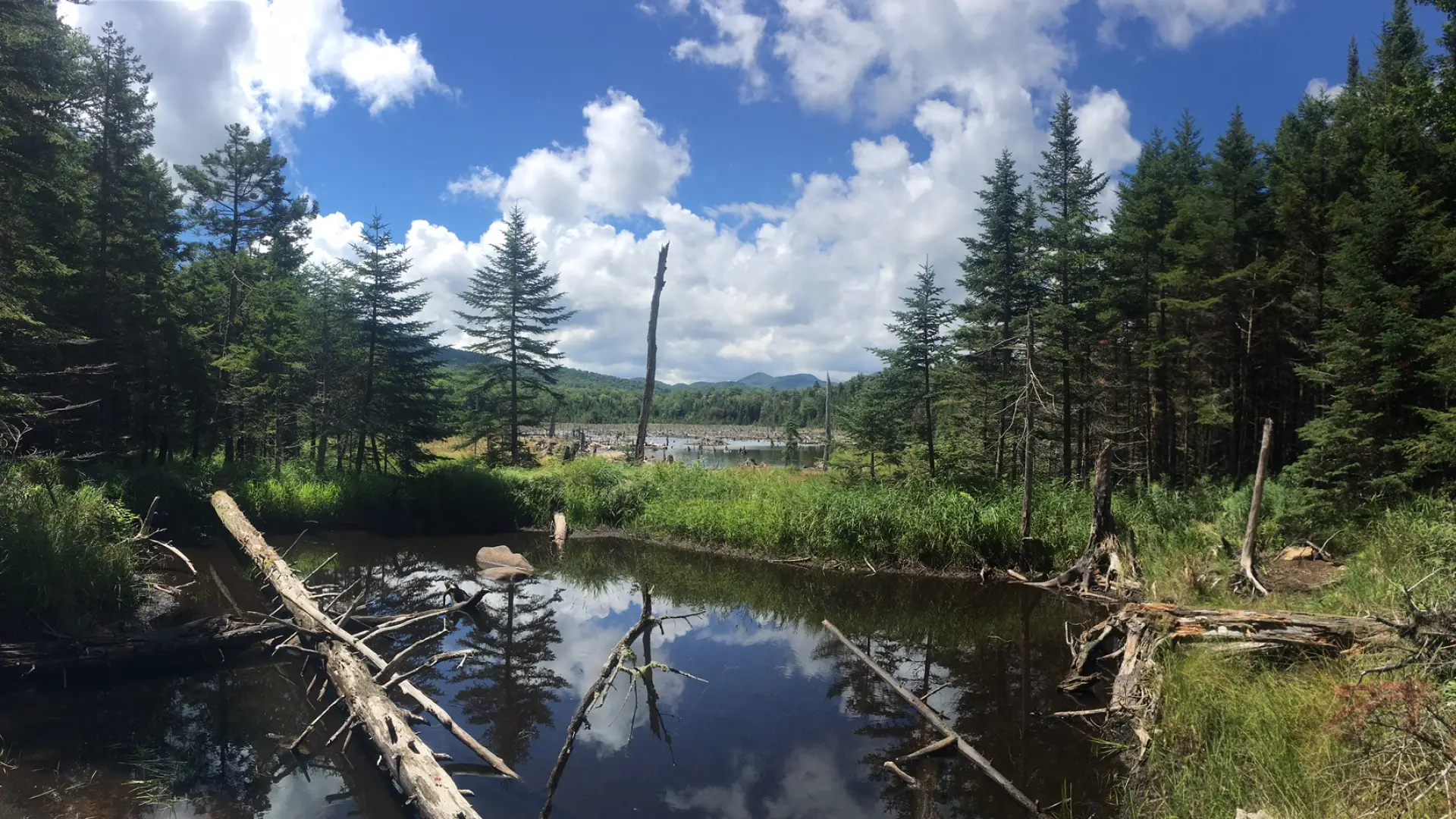New York state’s oldest long distance trail
Completed in 1924, the Northville-Placid Trail (NPT) extends 138 miles through the Adirondack Park. The footpath connects hikers to the wild character of the Adirondack Park, as well as the communities that the trail crosses.
Hiking the NPT
Described here is the northern section of the NPT, which runs from Lake Placid to Long Lake, and is a backpacking route of roughly 36 miles. The long distance trail continues for 100+ more miles from Long Lake to Northville. Read more about the southern section of the NPT from Long Lake to Northville. The northern terminus originally began at the Lake Placid-North Elba History Museum (once a train station), but most hikers now begin or end their hike at the Averyville Road Trailhead. From here, the trail meanders through a hardwood forest for some time, crossing streams and eventually reaching some more difficult hiking before reaching Duck Hole. From Duck Hole, a remote hike that features everything from metal suspension bridges, backcountry swimming holes, and historical sites takes hikers to the shores of Long Lake. After a night spent in one of the several Long Lake lean-tos, hikers can choose to refuel in the town of Long Lake.
Day hikes on the NPT
While the NPT can be done as a long backpacking trip, or as multiple section hikes, there are plenty of opportunities for hikers to enjoy a day hike on the trail.
- Wanika Falls - 14 miles round-trip to a backcountry waterfall.
- Duck Hole (via Upper Works) - 14 miles round-trip to a handful of backcountry lakes.
Winter on the NPT
The High Peaks Wilderness Area section of the NPT from Lake Placid is remote, and in the winter the trail tends to remain untracked with deep snow. A snowshoe or cross-country ski trip is possible, but not something to take lightly.
Leave No Trace and resources for the NPT
Responsibly recreating on the Northville-Placid Trail means recognizing our impact on the environment, and doing the best we can to leave the trail, and surrounding ecosystem, the way we found it. Planning ahead and preparing for the trip, no matter the length, is a key to success. Part of this is picking up resources like the guidebook and map for the NPT.
The NPT turns 100!
The NPT turns 100 this year! That’s 100 years of trailblazing, sight-seeing, species-finding, and a thru-hike that has connected our communities in the heart of the Adirondack region year after year. To celebrate such a beloved trail, this summer is packed with events all over. From the shores of Great Sacandaga Lake all the way to Lake Placid, you’ll be able to join in the festivities. Keep an eye out for upcoming events!
